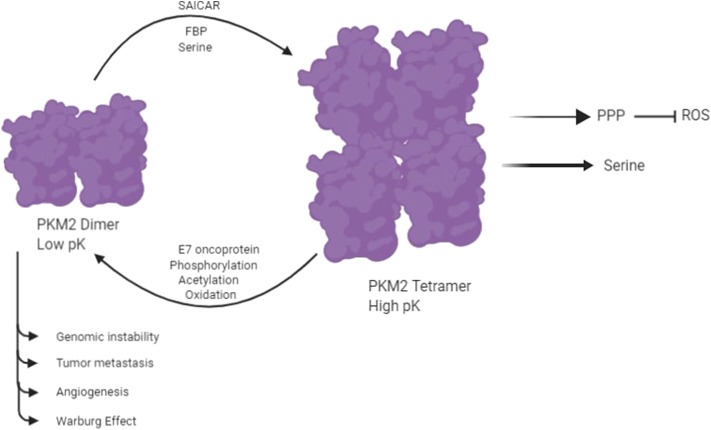Figure 2.
PKM2 exists in two isomeric forms: a highly active tetramer and a low-activity dimer, whereas PKM1 constitutively exists only as a highly active tetramer. Several molecules control the switching between the dimeric and tetrameric forms of PKM2. E7 oncoproteins, tyrosine kinase-mediated phosphorylation, acetylation, and oxidation encourage the formation of low-activity dimer PKM2. In contrast, fructose-1,6-P2, serine, and SAICAR promote the formation of highly active tetramer (18).

